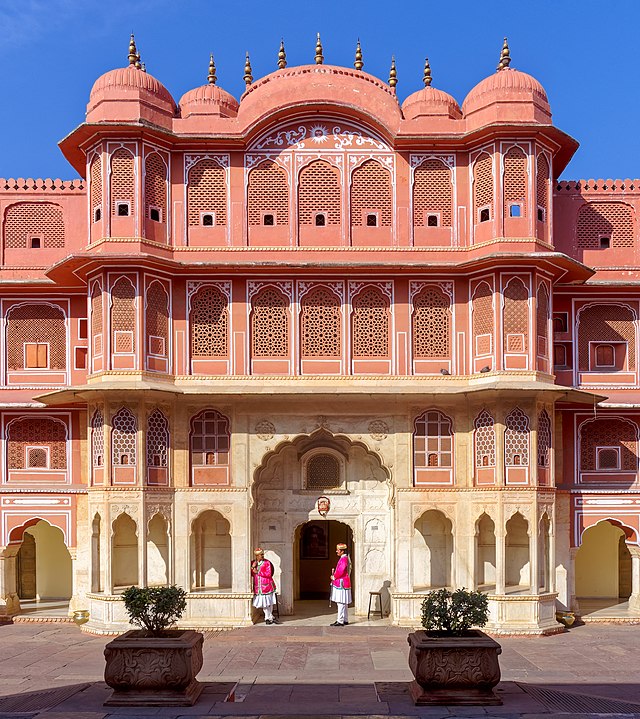Picture this: a city awash in soft pink hues, where every street corner whispers tales of royalty, culture, and timeless beauty. Welcome to Jaipur, India’s famed Pink City, a place where history meets vibrancy, and every moment feels like stepping into a royal saga. Nestled in the heart of Rajasthan, Jaipur isn’t just a destination—it’s an experience that captivates your senses. From its majestic forts to its bustling bazaars, this city has a charm that’s hard to resist. Why is it pink, you ask? Let’s dive into the story of Jaipur, explore its treasures, and uncover why it’s a must-visit gem in India’s crown.
Why Is Jaipur Called the Pink City?
Jaipur’s nickname isn’t just a catchy phrase—it’s a badge of history painted across its walls. The city’s signature terracotta-pink buildings give it a distinctive look, but the story behind the color is what makes it truly fascinating. It’s not just about aesthetics; it’s about hospitality, royalty, and a bold gesture that left a lasting legacy.
The Historical Reason Behind the Pink Hue
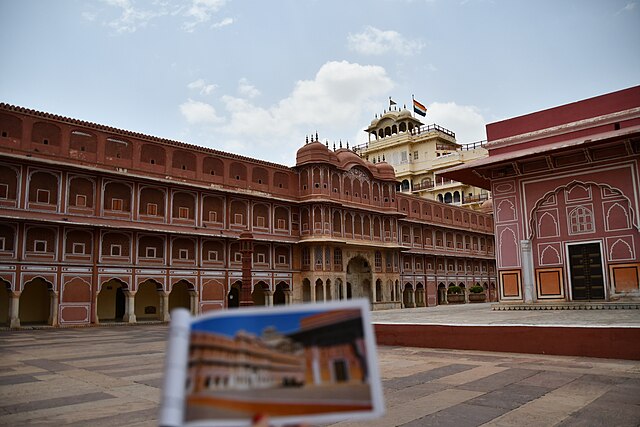
Back in 1876, Jaipur was gearing up for a grand visit from Albert Edward, the Prince of Wales. Maharaja Sawai Ram Singh II, the ruler at the time, wanted to roll out the red carpet—or rather, the pink one. Pink, in Rajasthani culture, symbolizes warmth and hospitality. So, the Maharaja decided to paint the entire city in this welcoming shade to impress the royal guest. The result? A city transformed into a pastel dreamland that caught the world’s attention. This bold move wasn’t just a one-time stunt; it became Jaipur’s identity, earning it the title of the Pink City.
The Legacy of the Pink Color Today
Fast forward to today, and Jaipur’s pink palette is still alive and well. Many of the city’s avenues and historical buildings retain their rosy glow, maintained by local laws to preserve the aesthetic. Walking through the old city feels like strolling through a living postcard, with pink facades glowing under the Rajasthan sun. It’s not just a color—it’s a vibe, a reminder of Jaipur’s royal past and its knack for making visitors feel like royalty too.
[](https://en.wikipedia.org/wiki/Jaipur)
A Glimpse into Jaipur’s Rich History
Jaipur isn’t just about pretty buildings; it’s a city steeped in stories of valor, vision, and architectural genius. Founded in 1727, it was one of India’s first planned cities, designed with a foresight that still amazes urban planners today. Let’s step back in time to uncover the roots of this magnificent city.
Founding of Jaipur by Maharaja Jai Singh II
Maharaja Sawai Jai Singh II wasn’t your average ruler. A visionary and a scholar, he founded Jaipur in 1727, moving his capital from Amber to create a city that blended science, art, and culture. With the help of architect Vidyadhar Bhattacharya, he laid out Jaipur like a chessboard, with wide streets and a grid-like pattern—pretty revolutionary for the 18th century! The city was named after him, and his love for astronomy and architecture shaped its soul.
[](https://en.wikipedia.org/wiki/Jaipur)
Architectural Brilliance and Vastu Shastra
Ever wonder why Jaipur feels so harmonious? It’s no accident. The city was built according to Vastu Shastra and Shilpa Shastra, ancient Indian architectural principles that emphasize balance and energy flow. The layout, with its nine grid sectors and grand gates like Suraj Pol (Sun Gate) and Chand Pol (Moon Gate), reflects cosmic order. This thoughtful design makes Jaipur not just a city but a living masterpiece of urban planning.
Top Landmarks to Explore in Jaipur
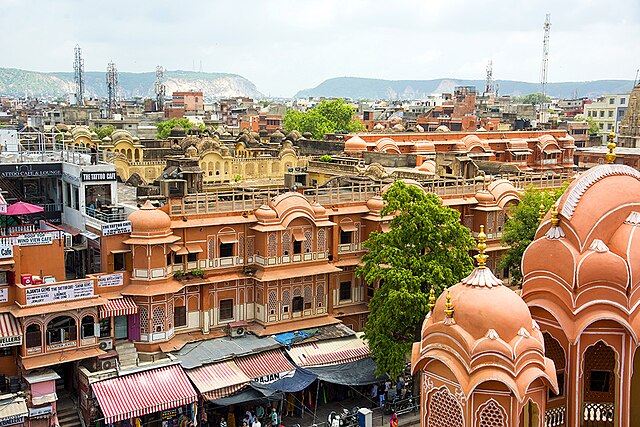
Jaipur is like an open-air museum, with landmarks that tell stories of royalty, craftsmanship, and innovation. Whether you’re a history buff, an architecture lover, or just someone chasing Instagram-worthy shots, these iconic spots will leave you spellbound.
Hawa Mahal: The Palace of Winds
Imagine a five-story palace with 953 delicate windows, designed to let breezes flow through while keeping the royal women hidden from public view. That’s Hawa Mahal, Jaipur’s most iconic landmark. Built in 1799, its honeycomb-like facade, shaped like Lord Krishna’s crown, is a marvel of Rajput architecture. Step inside, and you’ll find intricate jharokhas (windows) and a view that makes you feel like royalty yourself. Pro tip: Visit at sunrise when the pink sandstone glows like magic.
[](https://unacademy.com/content/railway-exam/study-material/geography/the-pink-city-jaipur/)
Amber Fort: A Majestic Marvel
Perched on a hill just outside Jaipur, Amber Fort (or Amer Fort) is like something out of a fairy tale. This 16th-century fortress blends Rajput and Mughal styles, with sprawling courtyards, mirror-lined halls, and views that’ll take your breath away. The Sheesh Mahal, a room covered in tiny mirrors that sparkle like stars, is a must-see. Ride an elephant (or a jeep) up to the fort and let its grandeur sweep you away.
City Palace: The Royal Heart of Jaipur
Smack in the center of Jaipur lies the City Palace, a sprawling complex that’s still home to the royal family. It’s a mix of Mughal and Rajasthani architecture, with courtyards, museums, and galleries showcasing royal artifacts. The Chandra Mahal and Mubarak Mahal are highlights, but don’t miss the Peacock Courtyard with its colorful doorways. It’s like walking through a living history book.
Jantar Mantar: A Stargazer’s Paradise
If you think astronomy is all about telescopes, Jantar Mantar will blow your mind. This UNESCO World Heritage Site is an 18th-century observatory built by Jai Singh II, with massive stone instruments that track celestial movements with eerie precision. The Samrat Yantra, a giant sundial, is accurate to within two seconds! It’s a geeky delight for science lovers and a testament to Jaipur’s intellectual heritage.
The Cultural Tapestry of Jaipur
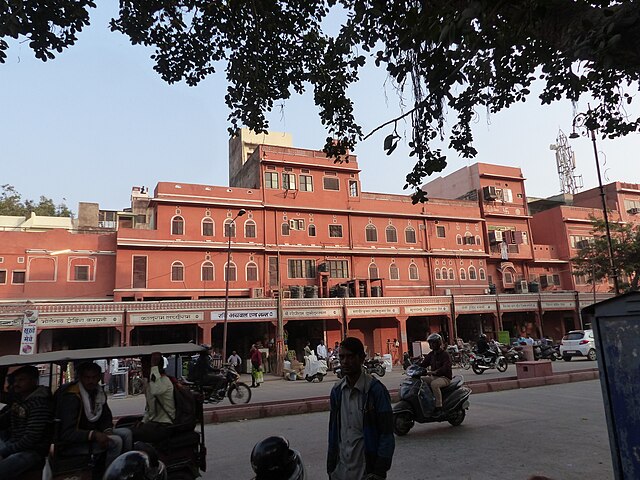
Jaipur’s culture is like a vibrant tapestry woven with traditions, festivals, and artistry. It’s a city that celebrates life with color, music, and a deep connection to its roots. Let’s unravel some of these cultural threads.
Vibrant Festivals and Traditions
Jaipur comes alive during festivals like Gangaur, Teej, and the Jaipur Literature Festival, the world’s largest free lit fest. Imagine streets filled with processions, women in colorful lehengas, and the air buzzing with music and dance. The Ghoomar folk dance and Kathak performances at the Jaipur Gharana are pure magic. These celebrations aren’t just events; they’re a window into Rajasthan’s soul.
The Art of Rajasthani Handicrafts
Jaipur is a paradise for artisans. From blue pottery to block-printed textiles, the city’s handicrafts are world-famous. Ever seen a hand-carved marble statue or a gemstone-encrusted necklace? Chances are, it came from Jaipur. The city’s School of Art, founded in 1868, keeps these traditions alive, making every piece a story of skill and heritage.
Savoring Jaipur’s Culinary Delights
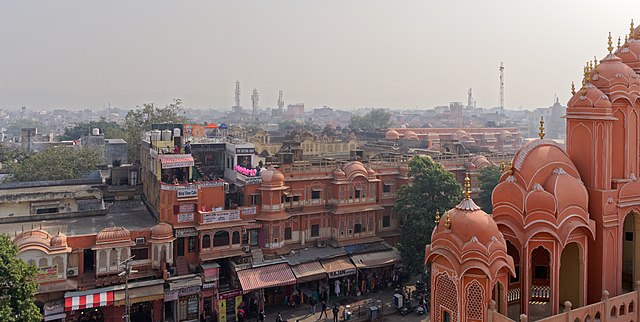
Food in Jaipur is like a love letter to your taste buds. Rajasthani cuisine is bold, spicy, and oh-so-satisfying, with dishes that reflect the region’s desert landscape and royal kitchens. Ready to dig in?
Must-Try Rajasthani Dishes
Let’s talk about dal baati churma, the ultimate Rajasthani comfort food. Picture crispy wheat balls (baati) dunked in spicy lentil curry (dal) and paired with sweet crumbled churma—it’s a flavor explosion. Don’t miss ghevar, a honeycomb-like dessert dripping with syrup, or laal maas, a fiery mutton curry that’ll wake up your senses. Vegetarian? Try aloo tikki or bajre ki roti with garlic chutney. Jaipur’s food is as vibrant as its streets.
Best Places to Eat in Jaipur
For authentic Rajasthani thalis, head to Chokhi Dhani, a cultural village that serves food with a side of folk music. Want a royal dining experience? Suvarna Mahal at Rambagh Palace is your spot. For street food, hit Lassiwala on MI Road for a creamy lassi that’s practically a meal. Just a heads-up: steer clear of eateries near Hawa Mahal unless locals recommend them—some charge a premium for subpar food.
Exploring Jaipur’s Bustling Bazaars
Jaipur’s markets are a shopaholic’s dream, bursting with color, chaos, and treasures. From sparkling jewelry to handwoven textiles, these bazaars are where you’ll find the city’s heartbeat.
Johari Bazaar for Jewelry Lovers
If you love bling, Johari Bazaar is your happy place. This market is famous for its gold, silver, and gemstone jewelry, especially kundan and meenakari work. Haggling is the name of the game here, so channel your inner negotiator and score a stunning piece that screams Rajasthan.
Bapu Bazaar for Handicrafts and Textiles
Bapu Bazaar is a treasure trove of block-printed fabrics, jootis (traditional shoes), and quirky handicrafts. It’s the kind of place where you’ll walk in for a scarf and walk out with bags full of souvenirs. The vibrant colors and patterns will have you dreaming of redecorating your entire house. Pro tip: Bargain politely, and you’ll get the best deals.
Why Jaipur Should Be on Your Travel List
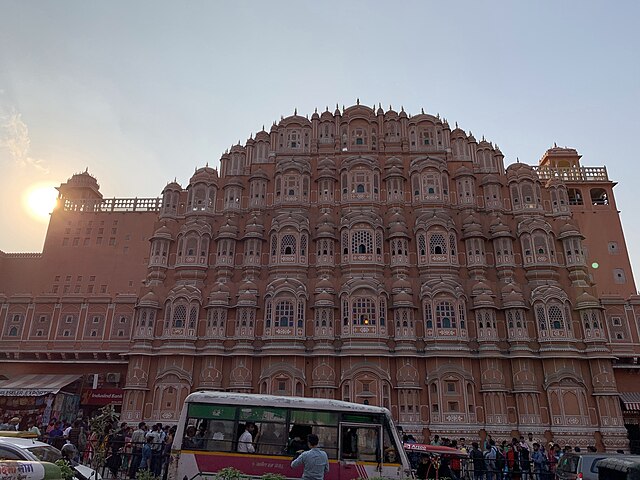
Jaipur isn’t just a city; it’s a vibe. It blends the grandeur of the past with the energy of the present, making it a destination that appeals to everyone—history nerds, foodies, shoppers, and culture vultures alike. Here’s why you need to pack your bags and head to the Pink City.
A Blend of Heritage and Modernity
Jaipur is like a perfectly brewed chai—traditional yet refreshing. You’ve got ancient forts and palaces rubbing shoulders with modern cafes and coworking spaces. The city is a business hub, a UNESCO World Heritage Site, and a cultural hotspot all at once. Whether you’re exploring Jantar Mantar or sipping coffee in a trendy cafe, Jaipur keeps you hooked.
Practical Tips for Visiting Jaipur
Planning a trip? Visit between October and March when the weather is pleasant. Getting around is easy—auto-rickshaws, cabs, or even cycle rickshaws are great for short distances. Stay hydrated, wear comfy shoes for all that walking, and don’t forget to carry cash for the bazaars. Oh, and if you’re a first-timer, consider a guided tour to soak in the history without getting overwhelmed.
Conclusion
Jaipur, the Pink City, is more than just a travel destination—it’s a journey into India’s royal heart. From the blush of its buildings to the buzz of its bazaars, every corner of this city tells a story of heritage, hospitality, and vibrancy. Whether you’re marveling at Hawa Mahal’s intricate windows, savoring a spicy laal maas, or bargaining for a gemstone necklace, Jaipur wraps you in its charm like a warm Rajasthani shawl. So, what are you waiting for? Pack your sense of wonder and let Jaipur paint your travel memories pink.
FAQs
1. Why is Jaipur called the Pink City?
Jaipur earned its nickname when Maharaja Sawai Ram Singh II painted the city pink in 1876 to welcome the Prince of Wales, symbolizing hospitality. The pink hue remains a defining feature today.
2. What are the must-visit landmarks in Jaipur?
Don’t miss Hawa Mahal, Amber Fort, City Palace, and Jantar Mantar. Each offers a unique glimpse into Jaipur’s royal and architectural heritage.
3. What’s the best time to visit Jaipur?
The ideal time is October to March when the weather is cooler and perfect for exploring. Summers can be scorching, so plan accordingly.
4. What food should I try in Jaipur?
Indulge in dal baati churma, Hawkins, laal maas, ghevar, and aloo tikki. For the best experience, try local eateries or places like Chokhi Dhani.
5. Are Jaipur’s markets worth visiting?
Absolutely! Johari Bazaar and Bapu Bazaar are perfect for jewelry, textiles, and handicrafts. Bargaining is key, so come prepared to haggle.

